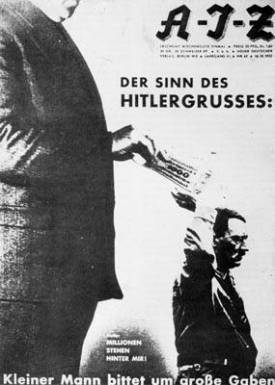If a Dadaist photograph moved, what would it look like? Alternative rock band, Franz Ferdinand, offers an almost four minute answer to that question. The 2004 music video heavily borrows from the dadaist imagery. Sometimes the video references specific images. One example is Moholy-Nagy’s Composition Z VIII:
There were obvious connections to the cultural period the song references. One being the band naming themselves after the Duke whose assassination tipped off WWI. I thought there was no other connection to that time besides the song title and the lyrics. After learning about photomontage, I’ll never see this video the same again.
As mentioned in the textbook, the montage was realized in film. The purpose was the same– there were strong politics behind the aesthetics of the technique. Sergei Eisenstein, a Soviet montage filmmaker, saw in montage the potential because it did not present ideas in the traditional format. The haphazard cut and pasting of photos of Dada is one way to describe the filmic montage style. Instead of magazine and newspaper images the medium was found film or film shot by the filmmaker themselves. The film was then edited in a way that defied forms of film narrativity—scenes appearing to begin and end like we expect them to. Montage filmmakers created meaning in film by editing alone–it was the juxtaposition of different film’s together. No meaning was in a lone film still.
The Dadaists were also about altering perception through non-traditional image production. How well does Ferdanand’s video realize the Dadaist intent through their filmic presentation of 2D photomontages? Personally, I feel—although it’s a worthy attempt—the video could have tried to recreate the fast cut-and-paste film editing reminiscent of the Soviet Montage. But no one is trying to make a political statement. Instead what we have here is just a darn good music video.























